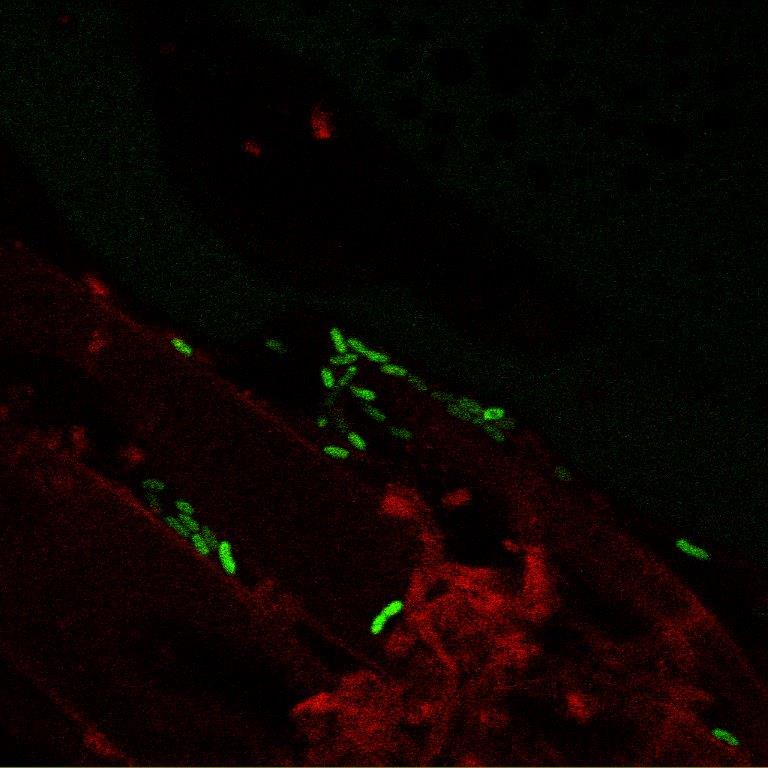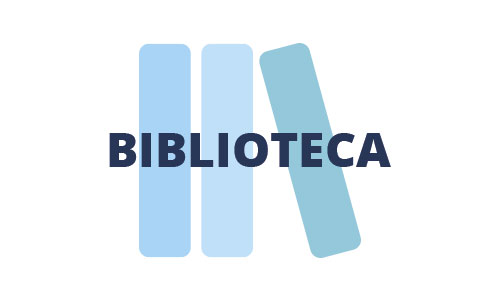Interacciones multitróficas en la rizosfera
 INTERACCIONES MULTITRÓFICAS EN LA RIZOSFERA
INTERACCIONES MULTITRÓFICAS EN LA RIZOSFERA
En la línea de “interacciones multitróficas en la rizosfera” se abordan los procesos que tienen lugar entre distintos microorganismos con la rizosfera de las plantas, especialmente durante los eventos de control biológico. Para ello se emplea principalmente el modelo de estudio aguacate / Rosellinia, aunque también el modelo tomate / Fusarium. El aguacate es un cultivo del máximo interés en nuestra área, y R. necatrix, que causa la podredumbre blanca radicular, es el principal patógeno fúngico que limita su cultivo.
Así, en un primer abordaje, es estudian la biología y función de rizobacterias con actividad de biocontrol frente a distintos patógenos fúngicos de suelo, incluido R. necatrix. El estudio de las bases moleculares de los diferentes modos de acción beneficiosa, como la producción de antibióticos antifúngicos, la colonización eficiente de raíces, la formación de biopelícula o la interacción directa con el hongo patógeno, revelan la importancia de estos procesos en la biología de los microorganismos en la rizosfera y permiten descifrar los procesos que tienen lugar en la misma.
Un segundo abordaje consiste en estudiar el efecto de aplicaciones de enmiendas orgánicas a suelos agrícolas. Tras la aplicación de algunas enmiendas, se produce la mejora tanto del estado fisiológico como del estado fitosanitario de las plantas. Se ha puesto de manifiesto como dicha aplicación de enmiendas orgánicas fomenta el desarrollo de supresividad frente a patógenos fúngicos mediado por grupos microbianos concretos. Por ello, y mediante la aplicación de diferentes herramientas, incluyendo las de genómica funcional, nos permiten conocer el efecto de estas enmiendas orgánicas en la diversidad microbiana de los suelos agrícolas y en la rizosfera de las plantas, revelando su papel en los eventos relacionados con dicha supresividad.
Finalmente, se estudian las comunidades microbianas del suelo, aplicando técnicas distintas técnicas “ómicas”. La composición de las comunidades microbianas y sus actividades en relación a distintos parámetros, como tipo de suelo, estado sanitario de la planta, o la aplicación de agentes de biocontrol, determinará las funciones del microbioma. La funcionalidad de estos microbiomas se lleva a cabo mediante aproximaciones moleculares y funcionales, determinando su participación en aspectos fundamentales de la planta y de la salud del suelo agrícola.
Investigador responsable: FRANCISCO M. CAZORLA LÓPEZ ResearcherID: G-3907-2011
Miembros
Francisco M. Cazorla López
Antonio de Vicente Moreno
Eva Arrebola Díez
Juan A. Gutiérrez Barranquero
Sandra Tienda Serrano
Zaira Heredia Ponce
Rafael Villar Moreno
PUBLICACIONES (últimos 5 años, desde 2015)
Calderón, C.E., C. Ramos, A. de Vicente y F.M. Cazorla. Comparative genomic analysis of Pseudomonas chlororaphis PCL1606 reveals new insight into antifungal compounds involved in biocontrol. MOLECULAR PLANT-MICROBE INTERACTIONS 28:249-260 (2015). DOI: 10.1094/MPMI-10-14-0326-FI.
Bonilla, N., C. Vida, M. Martínez-Alonso, B.B. Landa, N. Gaju, F.M. Cazorla y A. de Vicente. Organic amendments to avocado crops induce suppressiveness and influence the composition and activity of soil microbial communities. APPLIED AND ENVIRONMENTAL MICROBIOLOGY 81:3405-3418 (2015). DOI: 10.1128/AEM.03787-14.
Granum, E., M.L. Pérez-Bueno, C.E. Calderón, C. Ramos, A. de Vicente, F.M. Cazorla y M. Barón. Metabolic responses of avocado plants to stress induced by Rosellinia necatrix analysed by fluorescence and thermal imaging. EUROPEAN JOURNAL OF PLANT PATHOLOGY 142:625-632 (2015). DOI: 10.1007/s10658-015-0640-9.
Vida, C., N. Bonilla, A. de Vicente y F.M. Cazorla. Microbial profiling of a suppressiveness-induced agricultural soil amended with composted almond shells. FRONTIERS IN MICROBIOLOGY 7:4 (2016). DOI: 10.3389/fmicb.2016.00004.
Cazorla, F.M. y J. Mercado-Blanco. Biological control of tree and woody plant diseases: an impossible task? BIOCONTROL 61:233-242 (2016). DOI: 10.1007/s10526-016-9737-0
Vida, C., A. de Vicente y F.M. Cazorla. Microbial profiling of a suppressiveness-induced agricultural soil amended with composted almond shells lead to isolation of new biocontrol agents. IOBC-wprs Bull. 117: 140-143. (2016).
Tienda, S., C. Vida, E. Arrebola, A. de Vicente y F.M. Cazorla. The rhizobacterium Pseudomonas chlororaphis PCL1606 doesn’t have activity as additional mechanism to biocontrol. IOBC-wprs Bull. 117: 21. (2016).
Vida, C., N. Bonilla, A. de Vicente y F.M. Cazorla. Microbial profiling of a suppressiveness-induced agricultural soil amended with composted almond shells. In: “Harnessing useful rhizosphere microorganisms for pathogen and pest biocontrol”, Ciancio, A., Pieterse, C.M.J. y Mercado-Blanco, J. (eds.). DOI: 10.3389/978-2-88945-059-6. Frontiers Media, Lausanne (Suiza). pp. 77-90. (2016).
Vida, C., A. de Vicente y F.M. Cazorla. Control biológico mediante rizobacterias de la podredumbre blanca radicular del aguacate. PHYTOMA España, 287: 29-33 (2017).
Vida, C., J.A. Torés, A. de Vicente y F.M. Cazorla. El empleo de enmiendas orgánicas en el cultivo del aguacate como estrategia de control de la podredumbre blanca radicular. PHYTOMA España, 287: 49-53 (2017).
Vida, C., A. de Vicente y F.M. Cazorla. Draft genome sequence of the rhizobacterium Pseudomonas chlororaphis PCL1606, displaying biocontrol against soilborne phytopathogens. GENOME ANNOUNCEMENTS, 5 (14): E00130-17 (2017).
Polonio, A., C. Vida, A. de Vicente y F.M. Cazorla. Impact of motility and chemotaxis features of the rhizobacterium Pseudomonas chlororaphis PCL1606 on its biocontrol of avocado white root rot. INTERNATIONAL MICROBIOLOGY, 20 (2): 95-104 (2017). Doi: 10.2436/20.1501.01.289.
Vida, C, F.M. Cazorla y A. de Vicente. Characterization of biocontrol bacterial strains isolated from a suppressiveness-induced soil after amendment with composted almond shells. RESEARCH IN MICROBIOLOGY, 168: 583-593 (2017). Doi: 10.1016/j.resmic.2017.03.007.
Vida, C., D. Ruano-Rosa, C. Escaño, I. Arjona-Girona, N. Bonilla, A. de Vicente, F.M. Cazorla y C.J. López-Herrera. Capítulo 16. Control biológico de la podredumbre blanca radicular del aguacate. Control Biológico de Enfermedades Vegetales. A. de Cal y P. Melgarejo (Eds.). Phytoma. 122-128. (2017).
Gutiérrez-Barranquero, J.A., F.M. Cazorla, J.A. Torés y A. de Vicente. Pantoea agglomerans as a new etiological agent of a bacterial necrotic disease of mango trees. PHYTOPATHOLOGY, 109: 17-26 (2019). Doi: 10.1094/PHYTO-06-18-0186-R.
Pliego, C., J.I. Crespo-Gómez, A. Pintado, I. Pérez-Martínez, A. de Vicente, F.M. Cazorla y C. Ramos. Response of the biocontrol agent Pseudomonas pseudoalcaligenes AVO110 to Rosellinia necatrix exudate. APPLIED AND ENVIRONMENTAL MICROBIOLOGY 85: e01741-18 (2019). Doi: 10.1128/AEM.01741-18.
Biessy, A., A. Novinscak, J. Blom, G. Léger, L.S. Thomashow, F.M. Cazorla, D. Josic y M. Filion. Diversity of phytobeneficial traits revealed by whole-genome analysis of worldwide-isolated phenazine-producing Pseudomonas spp. ENVIRONMENTAL MICROBIOLOGY. 21: 437-455 (2019). Doi: 10.1111/1462-2920.14476.
Calderón, C., S. Tienda, Z. Heredia-Ponce, E. Arrebola, G. Cárcamo-Oyarce, L. Eberl y F.M. Cazorla. The compound 2-hexyl, 5-propyl resorcinol has a key role in biofilm formation by the biocontrol rhizobacterium Pseudomonas chlororaphis PCL1606. FRONTIERS IN MICROBIOLOGY 10: 396. Doi: 10.3389/fmicb.2019.00396 (2019).
Arrebola, E., S. Tienda, C. Vida, A. de Vicente y F.M. Cazorla. Fitness features involved in the biocontrol interaction of Pseudomonas chlororaphis with host plants: the case study of PcPCL1606. FRONTIERS IN MICROBIOLOGY 10: 719. Doi: 10.3389/fmicb.2019.00719 (2019).
Molina-Santiago, C., J. R. Pearson, Y. Navarro, M. V. Berlanga-Clavero, A. M. Caraballo-Rodríguez, D. Petras, M. L. García-Martín, G. Lamon, B. Haberstein, F. M. Cazorla, A. de Vicente, A. Loquet, P. C. Dorrestein y D. Romero. The extracellular matrix protects Bacillus subtilis colonies from Pseudomonas invasion and modulates plant co-colonization. NATURE COMMUNICATIONS 10: 1919. Doi: 10.1038/s41467-019-09944-x (2019).
Pérez-Bueno, M.L., M. Pineda, C. Vida, D. Fernández-Ortuño, J.A. Torés, A. de Vicente, F.M. Cazorla y M. Barón. Detection of white root rot in avocado trees by remote sensing. PLANT DISEASE 103:1119-1125 (2019). Doi: 10.1094/PDIS-10-18-1778-RE.
López-Arjona, J.M., S. Tienda, I. Arjona-Girona, F.M. Cazorla y C.J. López-Herrera. Combination of low concentrations of fluazinam and antagonistic rhizobacteria to control avocado white root rot. BIOLOGICAL CONTROL 136:103996 (2019). Doi: 10.1016/J.BIOCONTROL.2019.05.015.
Zumaquero, A., S. Kanematsu, H. Nakayashiki, A. Matas, E. Martínez-Ferri, A. Barceló-Muñóz, F. Pliego-Alfaro, C. López-Herrera, F.M. Cazorla y C. Pliego. Transcriptome analysis of the fungal pathogen Rosellinia necatrix during infection of a susceptible avocado rootstock identifies potential mechanisms of pathogenesis. BMC GENOMICS 20: 1016. (2020) Doi: 10.1186/s12864-019-6387-5.
Vida, C., A. de Vicente y F.M. Cazorla. The role of organic amendments to soil for crop protection: Induction of suppression of soilborne pathogens. ANNALS OF APPLIED BIOLOGY 176:1-15 (2020). Doi: 10.1111/aab.12555.
Kamou, N.N., F.M. Cazorla, G. Kandylas y A. Lagopodi. Induction of defense-related genes in tomato plants after treatments with the biocontrol agents Pseudomonas chlororaphis ToZa7 and Clonostachys rosea IK726. ARCHIVES OF MICROBIOLOGY 202; 257-267 (2020). Doi: 10.1007/s00203-019-01739-4.
Arrebola, E., y F.M. Cazorla. Aer receptors influence the Pseudomonas chlororaphis PCL1606 lifestyle. FRONTIERS IN MICROBIOLOGY 11: 1874 (2020). Doi: 10.3389/FMICB.2020.01560.
Tienda, S., C. Vida, E. Lagendijk, S. de Weert, I. Linares, J. González-Fernández, E. Guirado, A. de Vicente, y F.M. Cazorla. Soil application of a formulated biocontrol rhizobacterium, Pseudomonas chlororaphis PCL1606, induces soil suppressiveness by impacting specific microbial communities. FRONTIERS IN MICROBIOLOGY 11: 1560 (2020). Doi: 10.3389/FMICB.2020.01874.
Cámara-Almirón, J., C. Molina-Santiago, A. Pérez-García, A. de Vicente, F.M. Cazorla y D. Romero. Understanding bacterial physiology for improving full fitness. How research can stimulate the development of commercial biocontrol against plant diseases, PROGRESS IN BIOLOGICAL CONTROL (A de Cal et al., Eds.). Springer Nature Switserland AG (2020), pp. 47-60.
Heredia-Ponce, Z., de Vicente, A., Cazorla, F.M., y Gutiérrez-Barranquero, J.A. Beyond the wall: exopolysaccharides in the biofilm lifestyle of pathogenic and beneficial plant-associated Pseudomonas. MICROORGANISMS 9:445, 17 pp. (2021). Doi: 10.3390/microorganisms9020445.
PUBLICACIONES ANTERIORES
González-Sánchez MA, A de Vicente, A Pérez-García, R Pérez-Jiménez, D Romero and FM Cazorla (2013) Evaluation of the effectiveness of biocontrol bacteria against avocado White root rot occurring under commercial greenhouse plant production conditions. BIOLOGICAL CONTROL 67:94-100.
Calderón CE, A Pérez-García, A de Vicente and FM Cazorla (2013) The dar genes of Pseudomonas chlororaphis PCL1606 are crucial for biocontrol activity via production of the antifungal compound 2-hexyl, 5-propyl resorcinol. MOLECULAR PLANT-MICROBE INTERACTIONS 26:554-565.
Gutiérrez-Barranquero JA, C Pliego, N Bonilla, CE Calderón, A Pérez-García, A de Vicente and FM Cazorla (2012) Sclerotization as a long-term preservation method for Rosellinia necatrix strains. MYCOSCIENCE 53: 460-465.
Bonilla N, JA Guitérrez-Barranquero, A de Vicente, FM Cazorla (2012) Enhancing soil quality and plant health through suppressive organic amendments. DIVERSITY 4: 475-491.
Bonilla N, FM Cazorla, M Martínez-Alonso, JM Hermoso, JJ González-Fernández, N Gaju, BB Landa and A de Vicente (2012) Organic amendments and land management affect bacterial community composition, diversity and biomass in avocado crop soils. PLANT AND SOIL 357: 215-226.
Pliego C, C López-Herrera, C Ramos and FM Cazorla (2012) Developing tools to unravel the biological secrets of Rosellinia necatrix, an emergent threat to woody crops. MOLECULAR PLANT PATHOLOGY 13:226-239.
Pliego C, C Ramos, A de Vicente and FM Cazorla (2011) Screening for candidate bacterial biocontrol agents against soilborne fungal plant pathogens. PLANT AND SOIL 340:505-520.
González-Sánchez MA, R Pérez-Jiménez, C Pliego, C Ramos, A de Vicente and FM Cazorla (2010) Biocontrol bacteria selected by a direct plant protection strategy against avocado white root rot show antagonism as a prevalent trait. JOURNAL OF APPLIED MICROBIOLOGY 109: 65-78.
Pliego C, S Kanematsu, D Ruano-Rosa, A de Vicente, C López-Herrera, FM Cazorla and C Ramos (2009) GFP sheds light on the infection process of avocado roots by Rosellinia necatrix. FUNGAL GENETICS AND BIOLOGY 46:137-145.
Pliego C, S de Weert, G Lamers, A de Vicente, G Bloemberg, FM Cazorla and C Ramos (2008) Two similar enhanced root-colonizing Pseudomonas strains differ largely in their colonization strategies of avocado roots and Rosellinia necatrix hyphae. ENVIRONMENTAL MICROBIOLOGY 10:3295-3304.
Cazorla FM, D Romero, A Pérez-García, BJJ Lugtenberg, A de Vicente and G Bloemberg (2007) Isolation and characterization of antagonistic Bacillus subtilis strains from the avocado rhizoplane displaying biocontrol activity. JOURNAL OF APPLIED MICROBIOLOGY 103:1950-1959.
Pliego C, FM Cazorla, MA González-Sánchez, RM Pérez-Jiménez, A de Vicente and C Ramos (2007) Selection for biocontrol bacteria antagonistic toward Rosellinia necatrix by enrichment of competitive avocado root tip colonizers. RESEARCH IN MICROBIOLOGY 158: 463-470.
Cazorla FM, SB Duckett, ET Bergström, S Noreen, R Odijk, BJJ Lugtenberg, JE Thomas-Oates and GV Bloemberg (2006) Biocontrol of avocado dematophora root rot by antagonistic Pseudomonas fluorescens PCL1606 correlates with the production of 2-hexyl, 5-propyl resorcinol. MOLECULAR PLANT-MICROBE INTERACTIONS 19:418-428.







